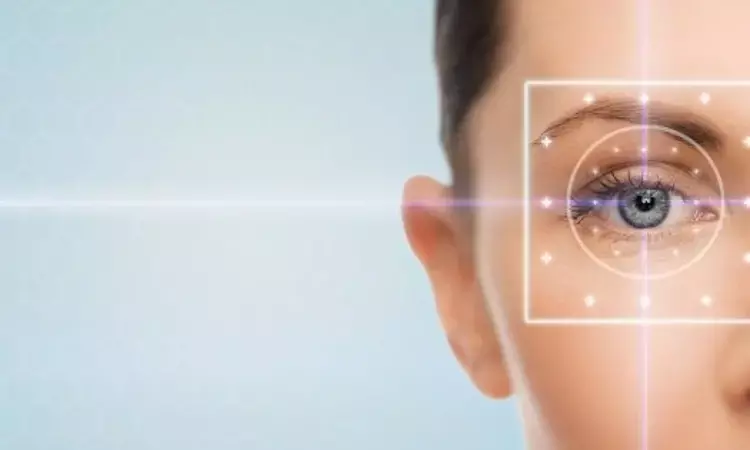- Home
- Medical news & Guidelines
- Anesthesiology
- Cardiology and CTVS
- Critical Care
- Dentistry
- Dermatology
- Diabetes and Endocrinology
- ENT
- Gastroenterology
- Medicine
- Nephrology
- Neurology
- Obstretics-Gynaecology
- Oncology
- Ophthalmology
- Orthopaedics
- Pediatrics-Neonatology
- Psychiatry
- Pulmonology
- Radiology
- Surgery
- Urology
- Laboratory Medicine
- Diet
- Nursing
- Paramedical
- Physiotherapy
- Health news
- Fact Check
- Bone Health Fact Check
- Brain Health Fact Check
- Cancer Related Fact Check
- Child Care Fact Check
- Dental and oral health fact check
- Diabetes and metabolic health fact check
- Diet and Nutrition Fact Check
- Eye and ENT Care Fact Check
- Fitness fact check
- Gut health fact check
- Heart health fact check
- Kidney health fact check
- Medical education fact check
- Men's health fact check
- Respiratory fact check
- Skin and hair care fact check
- Vaccine and Immunization fact check
- Women's health fact check
- AYUSH
- State News
- Andaman and Nicobar Islands
- Andhra Pradesh
- Arunachal Pradesh
- Assam
- Bihar
- Chandigarh
- Chattisgarh
- Dadra and Nagar Haveli
- Daman and Diu
- Delhi
- Goa
- Gujarat
- Haryana
- Himachal Pradesh
- Jammu & Kashmir
- Jharkhand
- Karnataka
- Kerala
- Ladakh
- Lakshadweep
- Madhya Pradesh
- Maharashtra
- Manipur
- Meghalaya
- Mizoram
- Nagaland
- Odisha
- Puducherry
- Punjab
- Rajasthan
- Sikkim
- Tamil Nadu
- Telangana
- Tripura
- Uttar Pradesh
- Uttrakhand
- West Bengal
- Medical Education
- Industry
360 degree selective laser trabeculoplasty effective for reducing IOP in glaucoma

A new study by Michaelov Evan and team showed that in patients with open angle glaucoma and glaucoma suspects, 360 degrees selective laser trabeculoplasty (SLT) was more effective at lowering intraocular pressure (IOP) at 1 year compared to 180 degrees SLT with a similar safety profile. The findings of this study were published in Journal of Glaucoma.
When compared to 180 degree SLT, 360 degree selective laser trabeculoplasty (SLT) lowers intraocular pressure (IOP) more effectively with the same safety profile. Using a paired-eye design to reduce confounders, this study sought to ascertain whether there were any differences between the IOP lowering benefits and safety profiles of 180 versus 360 degrees SLT.
Patients presenting with open angle glaucoma or glaucoma suspects were enrolled in this single-center randomised control experiment. After enrollment, one eye was randomly assigned to receive 180 degrees of SLT, while the other received 360 degrees of SLT. Following a year of patient monitoring, changes in visual acuity, Goldmann IOP, thickness of the retinal nerve fibre layer, Humphrey visual fields, cup-to-disc ratio derived from optical coherence tomography, and any adverse events or needs for additional medical interventions were evaluated.
The key findings of this study were:
1. The study involved 40 individuals, or 80 eyes in all. At one year, the IOP in the 180 degree group decreased from 25.3±2.3 mm Hg to 21.5±2.7 mm Hg 360 degree group from 25.5 mm Hg to 19.9 mm Hg (P0.01).
2. The two groups did not significantly differ in the quantity of adverse events or major adverse events.
3. At a 1-year follow-up, there were no statistically significant differences in visual acuity, the Humphrey visual field mean deviation, the thickness of the retinal nerve fibre layer, or the C:D ratio.
In conclusion, with a similar safety profile, the 360° treatment of the anterior chamber angle with SLT may be more efficient than the 180° treatment.
Reference:
Michaelov, E., Sachdeva, R., Raniga, A., & Lin, T. (2023). A Randomized, Controlled Comparison of 180 Versus 360 Degrees Selective Laser Trabeculoplasty in Open Angle Glaucoma and Glaucoma Suspects. In Journal of Glaucoma (Vol. 32, Issue 4, pp. 252–256). Ovid Technologies (Wolters Kluwer Health). https://doi.org/10.1097/ijg.0000000000002184
Neuroscience Masters graduate
Jacinthlyn Sylvia, a Neuroscience Master's graduate from Chennai has worked extensively in deciphering the neurobiology of cognition and motor control in aging. She also has spread-out exposure to Neurosurgery from her Bachelor’s. She is currently involved in active Neuro-Oncology research. She is an upcoming neuroscientist with a fiery passion for writing. Her news cover at Medical Dialogues feature recent discoveries and updates from the healthcare and biomedical research fields. She can be reached at editorial@medicaldialogues.in
Dr Kamal Kant Kohli-MBBS, DTCD- a chest specialist with more than 30 years of practice and a flair for writing clinical articles, Dr Kamal Kant Kohli joined Medical Dialogues as a Chief Editor of Medical News. Besides writing articles, as an editor, he proofreads and verifies all the medical content published on Medical Dialogues including those coming from journals, studies,medical conferences,guidelines etc. Email: drkohli@medicaldialogues.in. Contact no. 011-43720751


